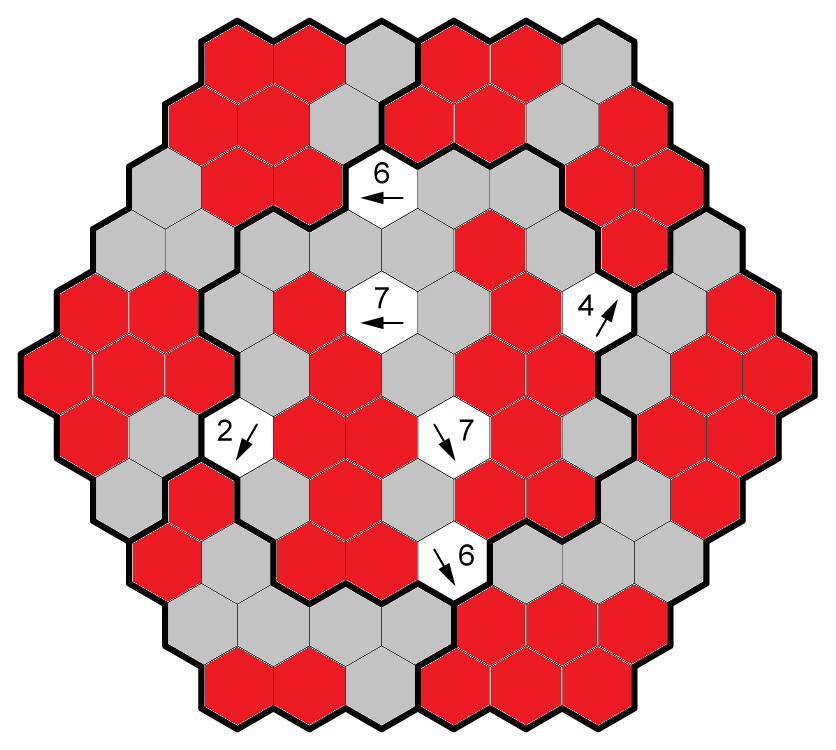Kurokuron (クロクロ一ン: "black clone"), is a shading puzzle that first appeared in Puzzle Communication Nikoli issues 153-155. Identical rules apply to a hexagonal grid.
Rules
Shade some cells such that:
- Bold-outlined regions contain exactly two shapes, made up of contiguous groups of 1 or more shaded cells. Within a region, the two shapes must be congruent, allowing reflection and rotation.
- A shape cannot share an edge with another shape.
- Cells with arrows, which cannot be shaded, point to a neighboring cell, which must be shaded and part of a shape consisting of the given number of cells.







